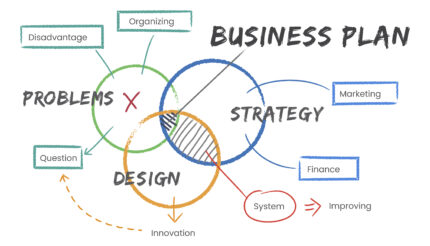Building a Strong Foundation: How to Strategically Focus on 4 Key Growth Areas for Your Business
Building a strong foundation is crucial for the success of any business, and focusing on the right areas can make all the difference.
Unlocking success and achieving sustainable growth is the ultimate goal for a business. But with so many areas to focus on, where do you start? In this comprehensive guide, we delve into the four key growth areas that can drive your business to new heights.
First, we explore the power of innovation and how it can propel your business forward. From developing new products to embracing cutting-edge technologies, innovation is the driving force behind successful companies.
Next, we dive into the realm of customer experience. By understanding your customers’ needs and preferences, you can create unforgettable experiences that keep them coming back for more.
But it’s not just about the customers – cultivating a high-performing team is equally important. We explore the strategies to attract, develop, and retain top talent, ensuring that your business has the best people driving its success.
Finally, we address the crucial role of marketing and branding. From crafting a compelling brand story to leveraging digital channels, effective marketing can create a strong presence in the market and set your business apart from the competition.
Join us as we uncover the secrets to unlocking success in these four key growth areas. Get ready to take your business to the next level.
Understanding the importance of focusing on growth areas
In today’s fast-paced and competitive business landscape, when building a strong foundation it’s crucial to identify and prioritise key growth areas to stay ahead of the curve. By focusing on these areas, you can leverage opportunities, overcome challenges, and ultimately unlock the true potential of your business.
To begin, it’s essential to have a clear understanding of your business goals and objectives. What do you want to achieve? Are you looking to increase sales and revenue, expand your customer base, develop new products or services, or streamline your operations? Once you have defined your goals, you can start identifying the specific growth areas that will help you achieve them.
Key growth area 1: Sales and revenue generation
Sales and revenue generation are at the heart of every successful business. To unlock growth in this area, you need to have a well-defined sales strategy, a strong sales team, and effective sales processes in place.
One key aspect of sales and revenue generation is customer acquisition. This involves identifying and targeting the right customer segments, understanding their needs and preferences, and creating compelling value propositions to attract them. Additionally, implementing effective lead generation and nurturing strategies can help you convert potential customers into paying ones.
Another important aspect is customer retention. It’s more cost-effective to retain existing customers than to acquire new ones. By providing exceptional customer service, building strong relationships, and continuously adding value to your offerings, you can increase customer loyalty and drive repeat business.
Lastly, optimising your pricing strategy is crucial for maximizing sales and revenue. Conduct market research, analyse your competitors’ pricing, and align your pricing with the value you provide. This will help you strike the right balance between profitability and customer satisfaction.
Key growth area 2: Customer acquisition and retention
Customer acquisition and retention go hand in hand with sales and revenue generation, but they deserve a separate focus due to their critical importance. In today’s highly competitive market, acquiring and retaining customers is a constant challenge. However, by implementing effective strategies, you can unlock growth in this area and build a loyal customer base.
To acquire new customers, it’s important to understand their needs, preferences, and pain points. Conduct market research, analyse customer data, and create buyer personas to identify your target audience. Once you have a clear understanding of your ideal customers, tailor your marketing and sales efforts to address their specific needs and pain points. This will help you attract the right customers who are more likely to convert into paying ones.
In addition to customer acquisition, customer retention is equally important. Building strong customer relationships and providing exceptional customer service are key to retaining customers. Regularly engage with your customers through personalised communication, offer loyalty programs, and continuously improve your products or services based on their feedback. By demonstrating that you value their business, you can foster long-term customer loyalty.
Key growth area 3: Product or service development
Continuous innovation and product/service development are essential for staying competitive and unlocking growth. By constantly improving and expanding your offerings, you can attract new customers, retain existing ones, and differentiate yourself from competitors.
Start by understanding your customers’ needs and pain points. Conduct market research, gather customer feedback, and identify areas where you can provide additional value. This will help you develop new products or enhance existing ones to better meet customer expectations.
Moreover, embracing cutting-edge technologies and trends can give you a competitive edge. Consider how you can leverage AI, machine learning, or automation to improve your products or services. Explore emerging trends in your industry and stay ahead of the curve to position yourself as an innovator.
Additionally, collaboration and partnerships can play a crucial role in product or service development. Consider forming strategic alliances with complementary businesses or engaging in co-creation with customers to tap into new ideas and expertise.
Key growth area 4: Operational efficiency and cost reduction
Building a strong foundation requires operational efficiency and cost reduction these are often overlooked growth areas, but they can have a significant impact on your business’s bottom line. By streamlining processes, optimising resources, and reducing unnecessary expenses, you can unlock savings and increase profitability.
Start by conducting a thorough analysis of your current operations. Identify bottlenecks, inefficiencies, and areas where costs can be reduced. This can range from eliminating redundant processes to renegotiating supplier contracts to implementing automation.
Investing in technology and automation can also significantly improve operational efficiency. Consider adopting project management tools, CRM systems, or inventory management software to streamline processes and reduce manual errors. Automation can free up time and resources, allowing your team to focus on more value-added tasks.
Moreover, fostering a culture of continuous improvement and encouraging employee feedback can lead to innovative ideas and process optimisation. Involve your team in identifying areas for improvement and empower them to implement changes. This not only increases efficiency but also boosts employee engagement and morale.
Strategies for prioritising and addressing growth areas
With multiple growth areas to focus on, it’s essential to prioritise and address them strategically. Here are some strategies to help you effectively manage and unlock growth in the key areas discussed:
- Set clear goals and objectives: Define what success looks like for each growth area and align your efforts accordingly. This will help you stay focused and measure your progress.
- Develop a roadmap: Create a detailed plan that outlines the specific actions, milestones, and timelines for each growth area. This will provide a clear roadmap for implementation and ensure that you stay on track.
- Allocate resources wisely: Determine the resources, both financial and human, that are required to address each growth area. Allocate them strategically to maximize impact and ensure that you have the necessary support to execute your plans.
- Regularly assess and adjust: Continuously monitor and assess your progress in each growth area. Regularly review your strategies, measure results, and adjust your approach as needed. This will help you stay agile and responsive to changing market dynamics.
Measuring and tracking success
To ensure that your efforts in the key growth areas are yielding results, it’s important to establish clear metrics and track your progress. Here are some key performance indicators (KPIs) to consider:
- Sales revenue growth: Measure the percentage increase in sales revenue over a specific period. This will help you gauge the effectiveness of your sales and revenue generation strategies.
- Customer acquisition cost (CAC): Calculate the average cost of acquiring a new customer. This will help you assess the efficiency of your customer acquisition efforts and identify areas for improvement.
- Customer lifetime value (CLV): Determine the average revenue generated by a customer throughout their relationship with your business. This will help you understand the long-term value of your customers and guide your customer retention strategies.
- Product/service adoption rate: Track the percentage of customers who adopt your new products or services. This will indicate how well your product or service development efforts are resonating with your target audience.
- Operational efficiency metrics: Monitor metrics such as cycle time, production yield, or order fulfilment time to assess the effectiveness of your operational efficiency initiatives.
By regularly measuring and tracking these and other relevant KPIs, you can identify areas for improvement, make data-driven decisions, and ensure that your efforts are driving growth and delivering results.
By investing in targeted marketing campaigns and lead generation activities, they successfully attracted new customers. They also implemented a customer relationship management (CRM) system to streamline their sales processes and improve customer interactions. As a result, their sales revenue grew by 35% within the first year.
To retain existing customers, Company A focused on providing exceptional customer service and continuously improving their products based on customer feedback. They established a customer loyalty program and regularly engaged with customers through personalised communication. These efforts resulted in a 20% increase in customer retention rates.
Conclusion
Building a strong foundation, unlocking success and achieving sustainable growth requires a strategic focus on key growth areas. By prioritising innovation, customer experience, talent development, and marketing and branding, businesses can propel themselves to new heights.
Remember, success doesn’t happen overnight. It requires a commitment to continuous improvement, adaptability to changing market dynamics, and a customer-centric mindset. By taking a holistic approach and addressing these four key growth areas, you can unlock the true potential of your business and set yourself up for long-term success. So, get ready to embark on this journey and take your business to the next level.





